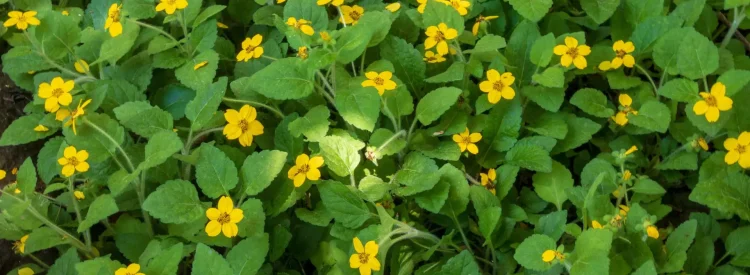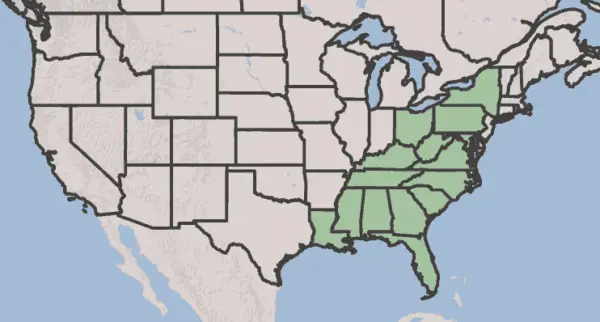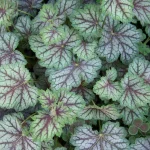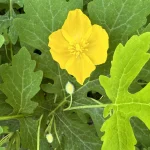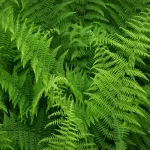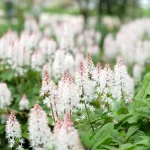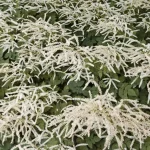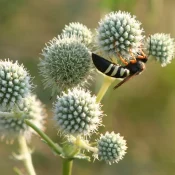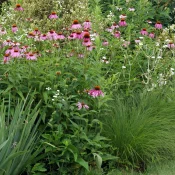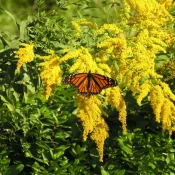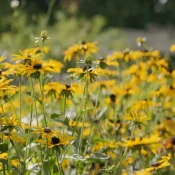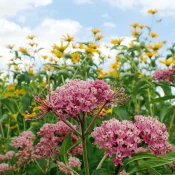This shade-loving native groundcover fills itself with bright yellow flowers in the spring. Once it starts flowering can keep going for 2+ months! In warmer climates, it can start blooming again in the fall. It’s a good native replacement for the you-see-them-everywhere petunias or impatients, both of which are non-native and annuals, so they have to be replanted every year. Skip those and plant some Green-and-Gold perennials to have beautiful yellow runways for years to come. Scroll on for planting tips!
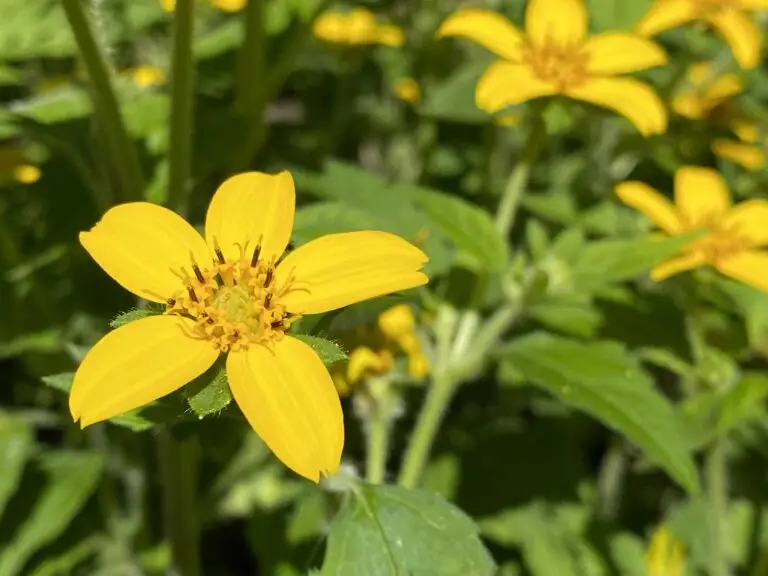
What are the benefits of planting Green-and-Gold?
Green-and-Gold is an amazing native plant that has grown in the Southeast United States since before Columbus arrived. Growing native plants like Green-and-Gold is important and easy for gardeners for many reasons, including:
- Native plants save time and money: after the first year of getting established, native plants like Green-and-Gold are happy with rain
- Green-and-Gold gives iconic animals like butterflies and other pollinators the food or homes needed to survive
- Native Green-and-Gold plants bloom in spring and sometimes again in fall, offering cinematic beauty with minimal work.
- Green-and-Gold is deer-resistant! Worried about your garden being eaten? This is a great plant for you!
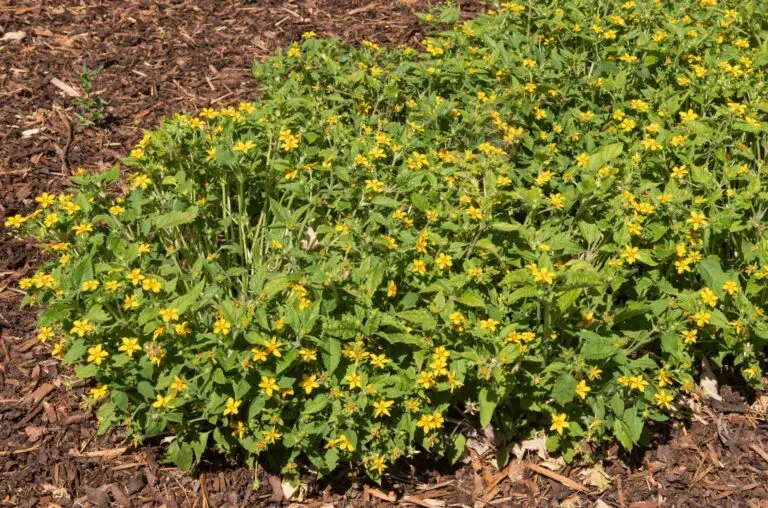
FAQs
When does Green-and-Gold bloom?
Green-and-Gold blooms in the spring and sometimes again in the fall, depending on the area. In warmer climates—like the South, and frequently the Mid-Atlantic due to climate change—Green-and-Gold reblooms in the fall.
Is Green-and-Gold evergreen?
Green-and-Gold is considered semi-evergreen: its leaves stay green and visible for most of the year. During the coldest spring months, leaves will die back until the new leaves emerge in the spring.
Does Green-and-Gold spread?
Yes! Green-and-Gold spreads by seed, enlarging its area every year.
Although Green-and-Gold seeds itself, it is NOT considered an invasive plant. This is because it’s so easy to pull out plants to stop them from overtaking an area. This is a big difference from a truly invasive species, which takes a herculean effort to remove once it gets itself going.
How do you grow Green-and-Gold?
These are very easy native flowers to grow. Don’t take our word for it! Here are two independent sources explaining Green-and-Gold’s easy-going nature:
According to the Ladybird Johnson Wildflower Center, “Plants seems to grow better if neglected than if pampered.”
And according to Master Gardener Patricia A. Taylor in her fantastic book, Easy Care Native Plants, “Just give this groundcover moist, humusy soil to get it started and then you can sit back and never have to do a thing with it except admire its long blooming period.”
We will always take beauty for minimal work. Here’s how to ensure Green-and-Gold can be planted and forgotten:
Light
Green-and-Gold thrives in a part shade to full shade. In warmer climates—like the South—ensure that your Green-and-Gold has some shade cover in the hot afternoons. (In nature, it lives underneath shrubs and trees on the edges of glades.)
Green-and-Gold can be planted in partly sunny areas if it gets consistent water. If planting in a sunnier area, be sure to give it water during hot and dry spells. If this seems like too much work, ensure your Green-and-Gold gets some shade.
Water
Green-and-Gold like consistent moisture to thrive and keep a long bloom period. While it likes consistent water, it does not like to be water-logged. During the first year of planting—while it’s getting established—give your Green-and-Gold water during hot or dry periods.
Added bonus: Green-and-Gold is deer-proof
Deer do NOT eat Green-and-Gold! If you’re worried about deer nibbling your garden, these are a perfect native plant.
A note: this plant can be hard to find in plant nurseries
This native plant is lovely and should be everywhere in the Mid-Atlantic and South. Sadly, it’s not as popular as it should be. It can take a few calls to different plant nurseries to find Green-and-Gold for your garden.
Your best bet may be Master Gardener Plant Sales in your county (frequently held in the spring) or going to a native-specific nursery.
There are a few places online that will ship Green-and-Gold plant starts. Pick plants from nurseries as close as possible to ensure the plants you’re getting will be used to your climate. Some online sources include:
- Growing Wild Nursery (North Carolina)
- Amanda’s Native Garden (New York)
- Izel’s Native Plants (Washington D.C.)
Where can I find seeds and plants?
Finding native plants can be challenging (we partly blame Marie Antoinette.) To make it easier, we’ve assembled four sourcing ideas.
300+ native nurseries make finding one a breeze
Explore 100+ native-friendly eCommerce sites
Every state and province has a native plant society; find yours
Online Communities
Local Facebook groups are a great plant source
Landscaping ideas for Green-and-Gold
The Soil Shepherds have a great overview video with three different landscaping ideas using Green-and-Gold.
What are good pairings for Green-and-Gold?
Pair this gorgeous native flower with other native flowers that thrive in similar light and soil. Some favorites include Bee Balm, Nodding Onion, Mountain Mint, Goldenrod, Joe Pye Weed, and native asters.
And now you know how and where to plant this native perennial flower! Planting native plants like Green-and-Gold helps our gardens become gorgeous while saving us time and water (especially compared to lawns or non-native plants.) Green-and-Gold is a perfect groundcover flower to swap out for short non-native flowers (like petunias or impatients). Because they are a perennial, plant once and watch them come back year after year. No matter if you live in the Mid-Atlantic or South, Green-and-Gold is a great native flower for you. Happy planting!
Sources
- Nelson, Gil. Best Native Plants for Southern Gardens: A Handbook for Gardeners, Homeowners, and Professionals, (2010).
- Harstad, Carolyn. Go Native! Gardening with Native Plants and Wildflowers in the Lower Midwest. (1999), 209-210.
- Ladybird Johnson Wildflower Center, Green-and-Gold.
- USDA, Green-and-Gold.
- NC State Extension, Green-and-Gold.
There are plenty of options for shade.
What if your feed was actually good for your mental health?
Give your algorithm a breath of fresh air and follow us.
